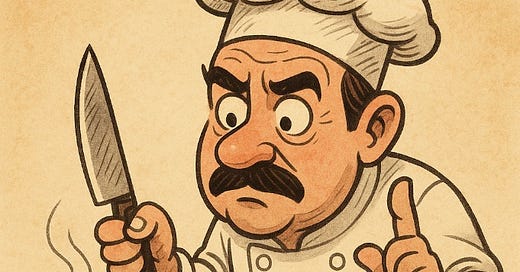Let It Rest: The Simple Science Behind Juicier Meat
You just pulled a sizzling steak off the grill. It smells amazing. The juices are bubbling. You grab your knife.
But hold on.
If you want that steak to be as juicy and tender as it looks, there’s one more step — and it’s not a gimmick.
You need to rest the meat.
This tiny pause might be the most underrated part of grilling. It’s not about “letting it cool.” It’s about what happens inside the meat — and it’s backed by science.
What Does “Resting” Meat Actually Mean?
Resting means letting the meat sit untouched for a few minutes after cooking. That’s it. No fridge. No fancy cover. Just patience.
Usually:
Steaks or chops rest 5–7 minutes
Medium roasts (like pork loin) rest 10–15 minutes
Large cuts (like brisket or turkey) rest 20–30 minutes
You can loosely cover big cuts with foil to keep them warm, but don’t wrap too tight or you’ll trap steam and ruin the crust.
Why Resting Works: A Little Food Chemistry
Here’s what happens when you cook meat:
As it heats up, the muscle fibers tighten.
That squeezes moisture toward the center of the meat.
If you cut it right away, all that liquid spills out onto the plate.
Ever sliced a steak and seen a puddle of juice? That’s your flavor — gone.
But if you wait a few minutes?
The muscle fibers relax.
That moisture spreads back out.
And the result is meat that’s juicier, more tender, and full of flavor.
This isn’t a kitchen myth. It’s how meat works on a cellular level.
The Hidden Heat: Carryover Cooking
Here’s another reason to wait: meat keeps cooking even after you take it off the grill.
It’s called carryover cooking.
The outside of the meat is hotter than the inside. So once it’s off the heat, that heat keeps moving inward. That can raise the internal temp by 5 to 10°F — or even more in big cuts.
That’s why:
If you want a steak to finish at 130°F (medium-rare), take it off the grill at 125°F.
It’ll hit the sweet spot while it rests — without overcooking.
Wait, Even Burgers?
Yes, even burgers benefit from resting.
Just 2–3 minutes will help keep juices inside the patty — not soaking the bun.
What If You Rest Too Long?
It’s possible. If small cuts sit too long, they can cool down and lose their crust.
The key is balance: just enough time to let the juices settle, not enough to turn your steak cold.
The Bottom Line: Why You Should Always Rest Your Meat
Locks in moisture
Saves the flavor
Helps meat finish cooking perfectly
Makes every bite more tender
It costs nothing. It takes just a few minutes. But it can make a huge difference in how your food tastes.
So next time you grill, don’t rush.
Let it rest.
Your steak — and your guests — will thank you.




